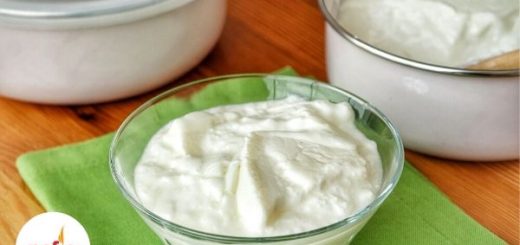How Many Calories Does Climbing Stairs Burn?

Using the stairs, which is a part of daily life, is one of the activities that make you feel fit and alive. The seemingly simple stair climbing exercise has many benefits, from burning fat to developing leg muscles, relieving back pain, and balancing body weight.
Taking the elevator instead of using the stairs and thus reaching the desired place without effort is one of the handicaps of the modern age. It is a fact that the routine order forces the individual to act quickly. However, it is necessary to pay attention to the use of stairs, walking and doing basic home exercises.
Stair climbing exercise is extremely functional for those who have a busy work life and cannot find time to go to the gym. If your days are spent around a hard work pace, you can take the stairs instead of using the escalator or elevator in the workplace, home, subway station and similar areas.
Stair climbing is an exercise that is almost always at hand. You can even do this activity on your way home, while walking, or even on an evening run for sports!
How Many Calories Does Climbing Stairs Burn?
- The act of climbing stairs allows calorie burning as it works the leg, waist and back muscles. Questions such as how many calories are in climbing 5 flights of stairs or is it beneficial to climb stairs after a meal are very common.
- Although the answers to these questions can be given with a detailed examination, it is true that climbing stairs is beneficial for burning calories and fat.
- In fact, stairs can even be called one of the ideal tools for calorie burning. Because basically, using the stairs is a challenging exercise. It is also true that strenuous and challenging exercises give good results.
- Climbing the top floor of a 5-floor office twice a day will allow you to lose 2 kilos per year, assuming that each step you climb consumes an average of 1.5 calories.
- Climbing 150 to 200 steps a day means burning around 225 to 300 calories. At this point, it should be added that the amount of calories that a person will burn in all activities in daily life may vary according to weight.
- This result, which is obtained without going to sports or doing regular sports exercises, that is, without extra effort, is quite good.
- In summary, if you are stuck in the work-home cycle or if you care about being fit without time, take care to choose the stairs.
What are the Benefits of Climbing Stairs?
- The use of stairs is a state of action that affects the body from head to toe. Here are some of the benefits:
- While climbing stairs, the weight of the whole body is supported by one foot, this provides body control and helps the development of hip and leg muscles.
- When going up the stairs, the back muscles are in motion; pressure on the back is directed to the legs and muscles. This active mobility affects the relief of back pain.
- With regular use of stairs, both fat burning and muscle mass increase. This makes it possible to lose weight.
- Supporting the whole body with one leg and passing this support from one leg to the other with each step ensures the balance of the body’s center of gravity. The work of the back and hip muscles during stair climbing is also effective in balancing the center of gravity.
- Stair exercise is good for the heart. Because climbing stairs increases the heart rate, cardio is extremely important in terms of strengthening the heart and feeling more fit.
- As a result of the decrease in body fat rate as a result of climbing stairs, thinning in the waist area, a decrease in blood pressure and cholesterol are also provided.
- Although stair climbing exercise is beneficial for diseases such as blood pressure and cholesterol, it is necessary to consult a specialist doctor, and to apply the diet and physical therapy methods that he will give.
Does Climbing Stairs Make You Weak?
- One of the most common questions is whether climbing stairs makes you lose weight. Stair exercise is effective in both losing weight and maintaining the current weight.
- Going up and down stairs burns calories faster than walking on a straight road, even stair exercise at a slow pace is more advantageous than normal walking.
- It should also be noted that there is a link between losing weight and losing calories. There is a direct proportion between being overweight and the amount of calories to be burned. So, the more weight you have, the more calories you burn.
- If you can’t find time to walk during the day, if you don’t have the time and budget to go to the gym, climbing stairs is a useful weight loss method. Not to mention it helps you feel more alive.
- Therefore, it is beneficial both in the short and long term for those living in metropolitan cities to take the stairs instead of using the escalator to get on the subway.
- Although it is a simple and daily action, if you have problems such as herniated disc and arthritis, you should do this exercise within the framework of doctor’s control.
Does Climbing Stairs Hurt You? Does It Increase Hips?
Another of the most common questions is whether climbing stairs thickens the hips:
- Going up and down the stairs does not make the hips, on the contrary, it helps to melt the fat in the hip area and tighten the muscles.
- Using the stairs means active work of the hips and legs.
- Although it is very similar to stepping, the body constantly carries its own weight up when using the stairs.
- As you step onto the next step, the body pulls itself up; This triggers the burning of energy and increases the mobility of the legs.
- The active work of the legs increases the blood flow rate and the amount of blood pumped here. This not only accelerates regional weight loss, but also provides a tight and taut appearance to the hips and legs.
- In this respect, climbing stairs does not make a hip, but rather melts it.
- If you have excesses in your hip area, if this bothers you, or if you want to tighten the hip area instead of regional slimming, you can do the stair exercise with peace of mind.
What Muscles Does Climbing Stairs Work?
- The answer to the question of whether climbing stairs builds muscle is “yes”.
- Stepping up makes the legs, hips, ankles and lower abdominal muscles work.
- It also has a positive effect on strengthening the heart and lungs.
- Plyometric movements while climbing the stairs work the muscles just like “lunge” and “squat” movements.
- Climbing stairs is like going uphill; The individual pulls up their body weight. As you continue to climb the stairs, the muscles work harder and the lungs and heart get stronger.
Considering the way the body works, the question arises whether climbing stairs is harmful. This exercise has no known harm.
- However, going up more or less steps at a fast or slow pace can react differently in everyone.
- People whose doctor’s opinion is in the direction of not spending effort and energy should be more cautious.
- Older adults and those with high weight problems should be more careful. Because climbing stairs can cause effects such as shortness of breath and a significant increase in heart rate in people with such problems.
- When you see a negative effect or feel that you are struggling, it is essential to stop doing the sport at that moment.
- For this reason, it is important for people with certain ailments to get doctor’s approval in order to do all sports that require effort, including climbing stairs.
- Apart from this, climbing stairs does not harm a healthy individual or have any side effects on the person.











